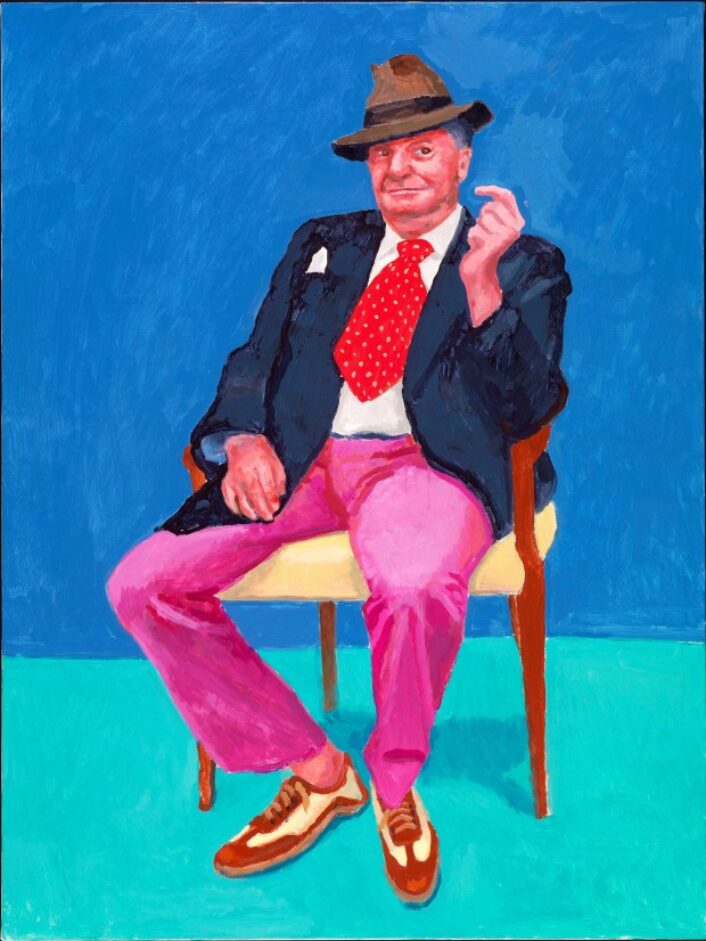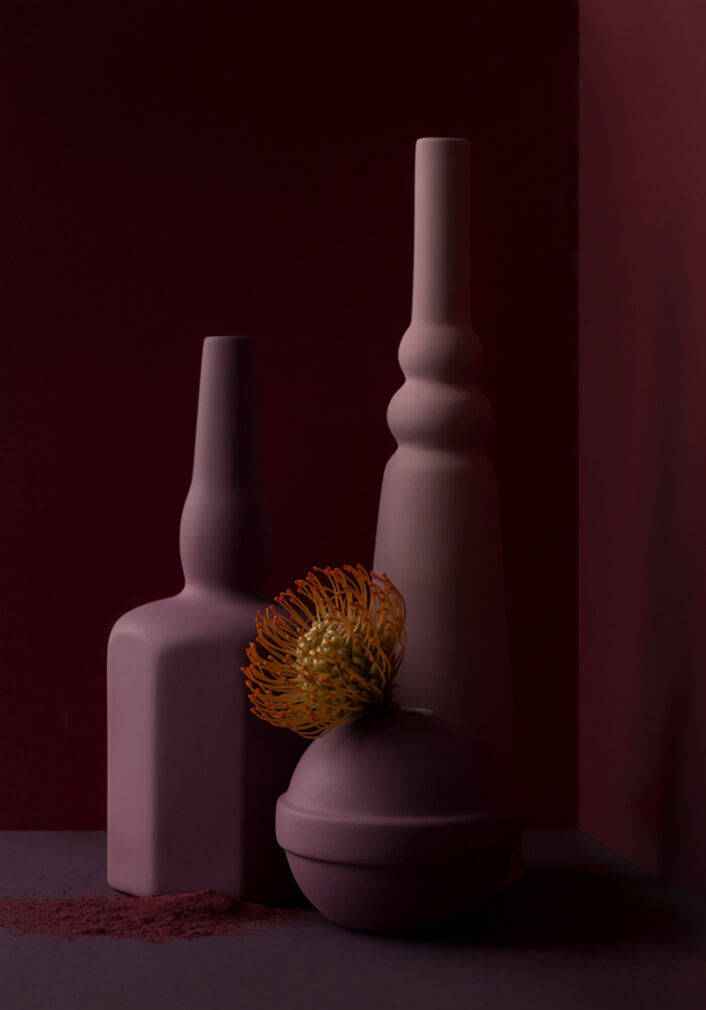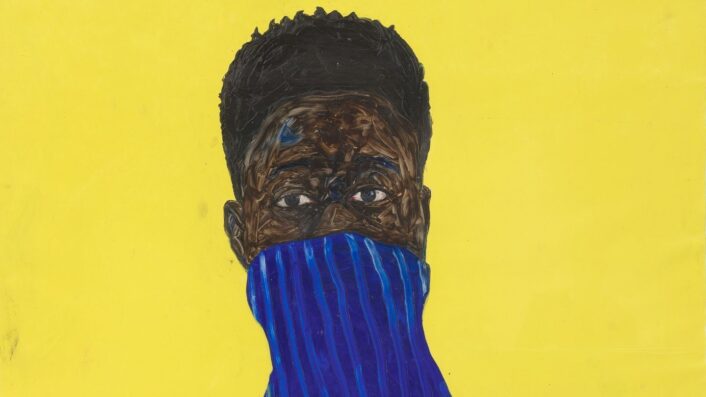Fine Art
Nicolas Party
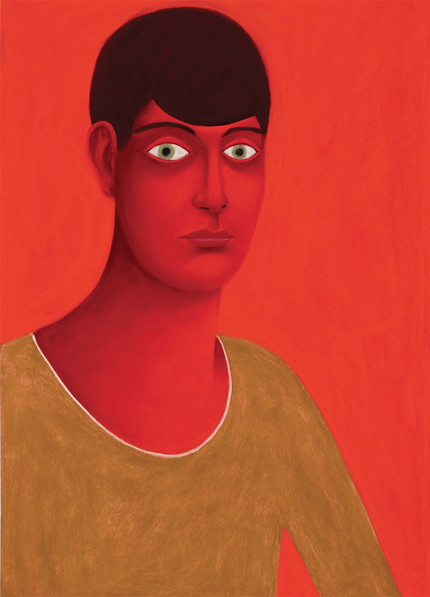
“Red Portrait,” 2017. Soft pastel on pastel card.
Dimensions are: 31.5″ x 22″
Image courtesy of: Art Forum
If you are familiar with contemporary art, chances are that you have heard of Nicolas Party. The Swiss-born, Brooklyn-based artist is someone who is perhaps best known for conceptional installations made from pastel. Party also creates paintings, painted sculptures, and drawings… most of which are (courtesy of Xavier Hufkens) “colour-saturated.”
Party was raised by an accountant father and a mother who ran a museum shop. In his late teens and early twenties, Party traveled throughout Europe working on street art; he became an internationally-known graffiti artist in the 1990’s. Eventually, Party moved to Scotland to study at the Glasgow School of Art; during this time, he developed his classical painting and artistic techniques.
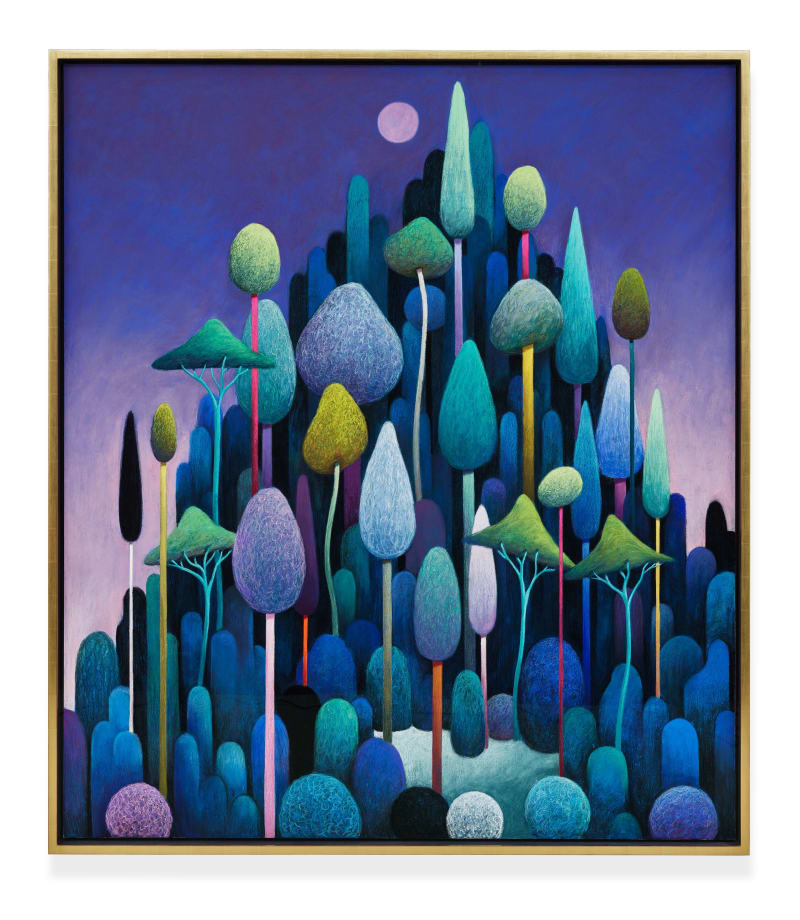
“Trees,” 2019. Work on paper, soft pastel on linen.
Dimensions are: 75″ x 65″ x 1″
Image courtesy of: Art Basel, photographed by: Thomas Barratt
For Party, it is clearly all about color; he always exhibits his paintings against complimentary-hued walls. The tones tend to be pale… teal or periwinkle, or even pink. For his admirers, it is exciting to see colors that have been seemingly forgotten about by most of the art world.
Particularly for Party, he could not create without his palette; his pastels are used to (courtesy of Bruzz), “create delightfully efflorescent, sweet, sensuous, and unusual, utterly artificial and yet strangely spirited portraits, landscapes, and still lives.”
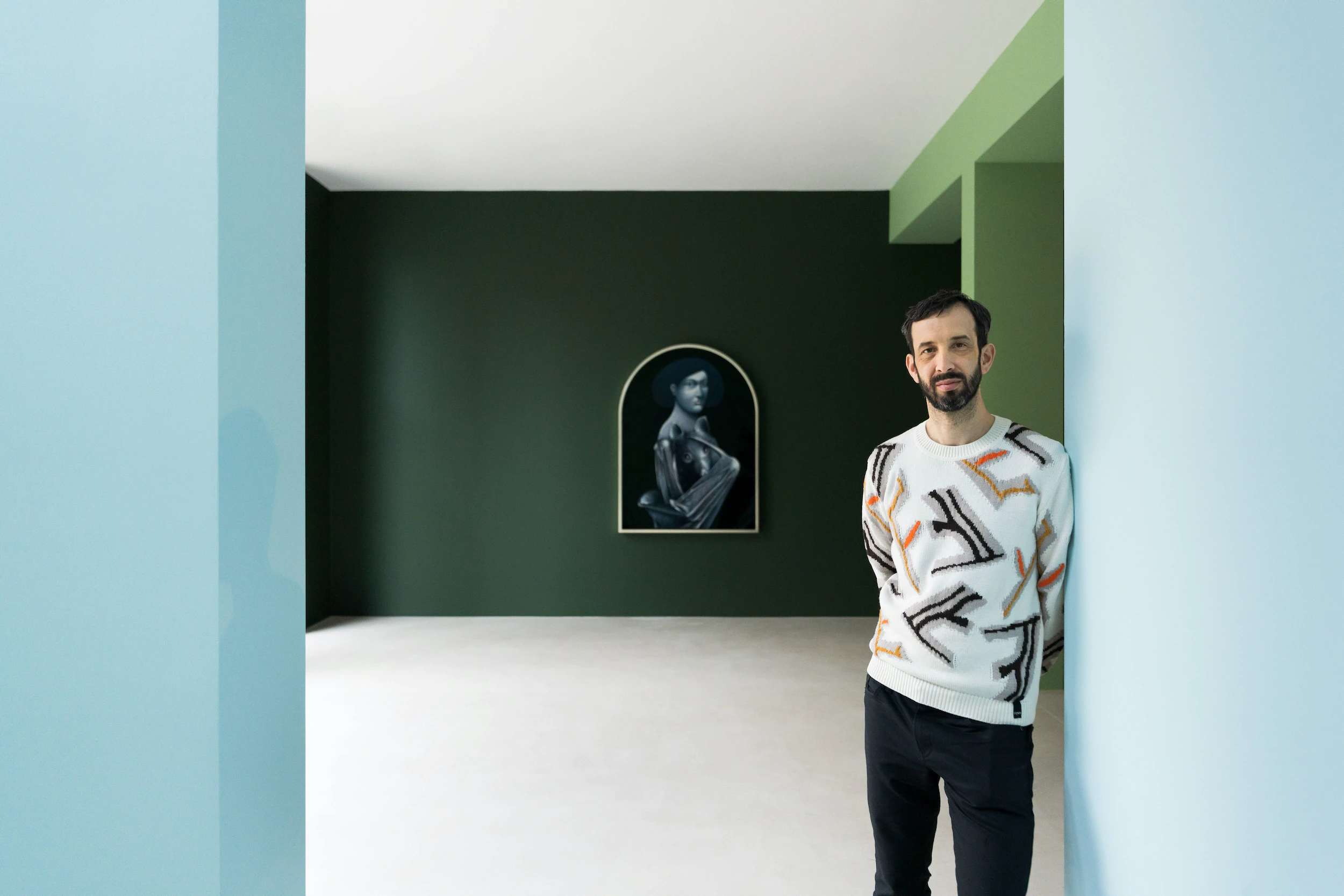
Party painted himself as the subject; for an exhibition at Xavier Hufkens in Brussels, Belgium.
Image courtesy of: Xavier Hufkens
For the most part, Party’s figures appear devoid of expression and detailing; yet there is something powerful about them. Similarly, his landscapes are quite engaging thanks to the bright and graphic colors; strong contrasting is the artist’s signature. Courtesy of Bruzz, his unique style makes “sure that my works popped and that they were seen.”
Some might say that Party’s work is “loud” and perhaps “undeveloped;” and critics might not recognize that Party’s work is the result of a lot of art education and personal trials. Particularly, it was viewing Picasso’s famed 1921 “Tete de femme” that was the artist’s “aha moment.” The painting show’s Picasso’s unique way of conveying shadows, shading, and volume. Party was so impressed that he bought his first box of pastels the next day; and from that day, those materials helped him realize his signature style.
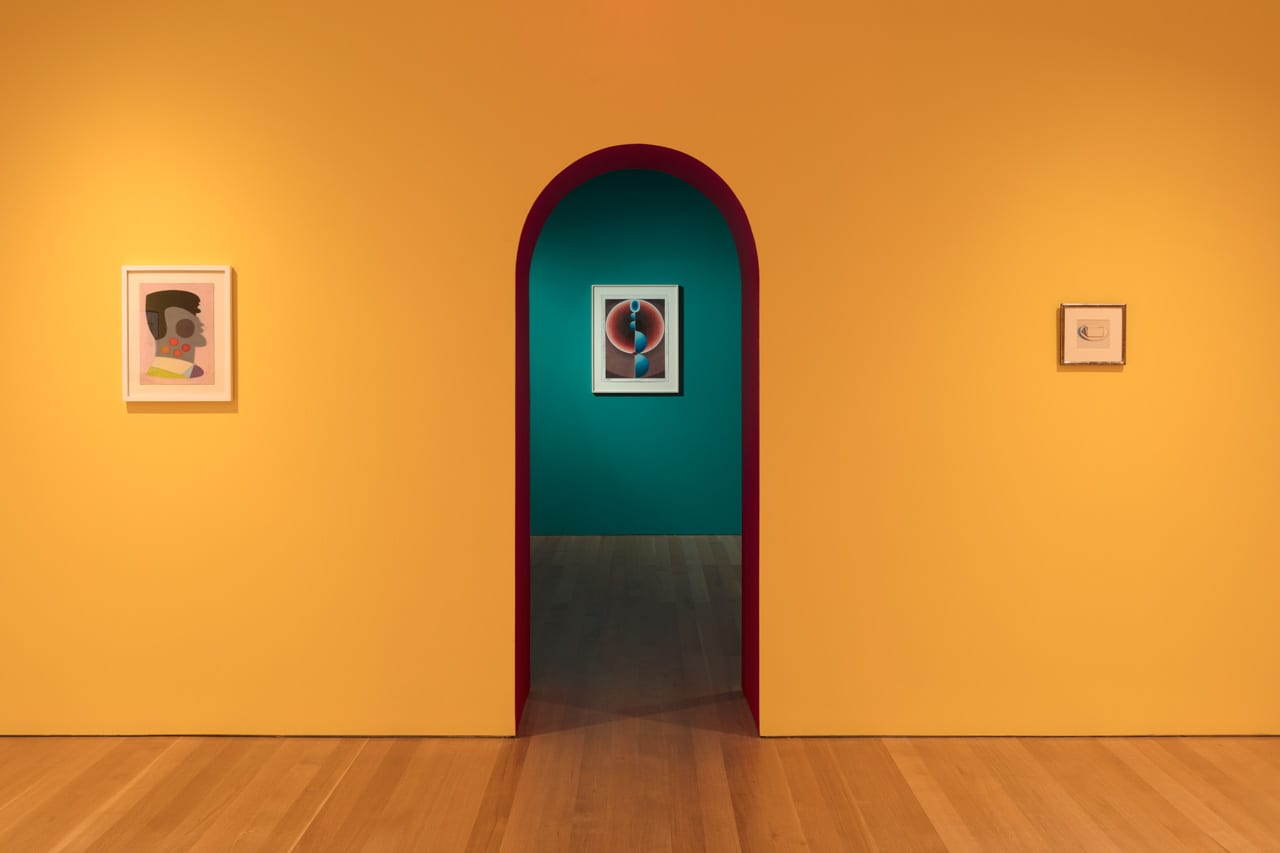
An installation view of “Nicolas Party: Pastels” at the Flag Art Foundation in New York City in 2019.
Image courtesy of: Art of Choice
Perhaps Party’s first “big break” was at the Metropolitan Opera’s Gallery Met where art world insiders were locked in a room for a four-hour-long dinner party with a number of Party’s intensely-hued sculptures. Pieces varied, but included were sculptures of bright faces, whimsical teapots, and imaginative trees.
That, followed by an installation at Chelsea’s Flag Art Foundation in 2019 brought Party a lot of acclaim. The exhibition was a juxtaposition of elements… specifically, large-scale panel wall murals were placed with petite pieces from both 18th-century masters and well-revered contemporary artists. Courtesy of the FLAG Art Foundation website, Osman Can Yerebakan from Observe said about the exhibition, “The approach here is ‘if less is more, more is even more.'” Furthermore, Brian T. Allen from National Review commented, “Party shows how high-octane pastel could be.”
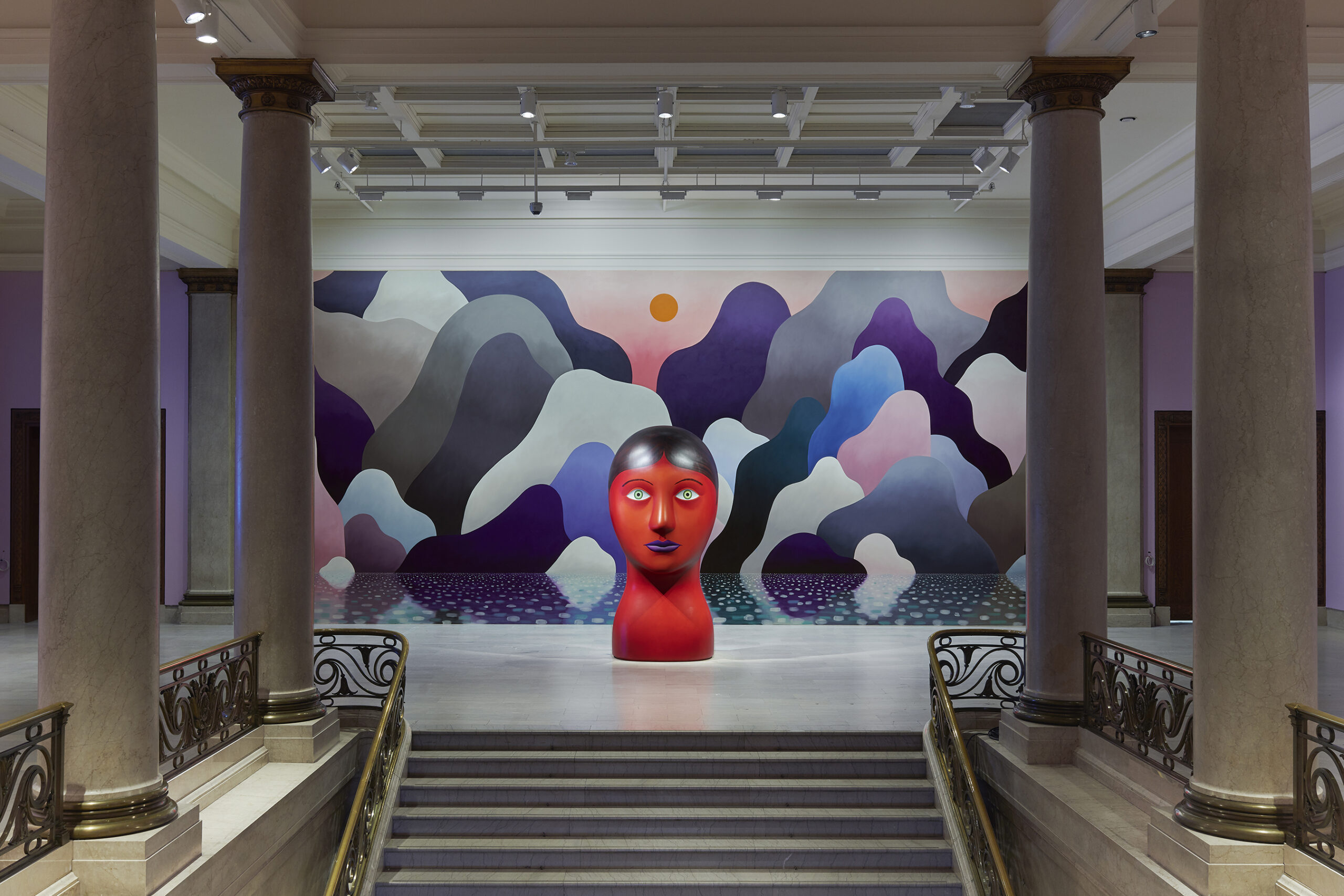
A view from the “Nicolas Party: L’heure mauve” installation at the Montreal Museum of Fine Arts in 2022.
Image courtesy of: Nuvo Magazine, photographed by: Jean-François Brière
Party credits his international success to his use of pastels, his never-ending energy, and his far-reaching vision. The artist sadly admits, that pastels have been forgotten about and neglected over the past two hundred years, or used (courtesy of Surface Magazine), “as a ‘hobby medium,’ or at the very best, something an artist will use for a preparatory sketch.”
For Party however, he is intent on bringing pastels back into the forefront of contemporary art; and making the material relevant. Clearly art lovers agree, Party’s pieces sell above projections when they become available and they always surpass records from previous sales. We love that Party never takes himself too seriously, he said (courtesy of Montreal Gazette), “I’m not part of the school of art that says things should be hard. If you’re visually amused, that’s fine with me.”
